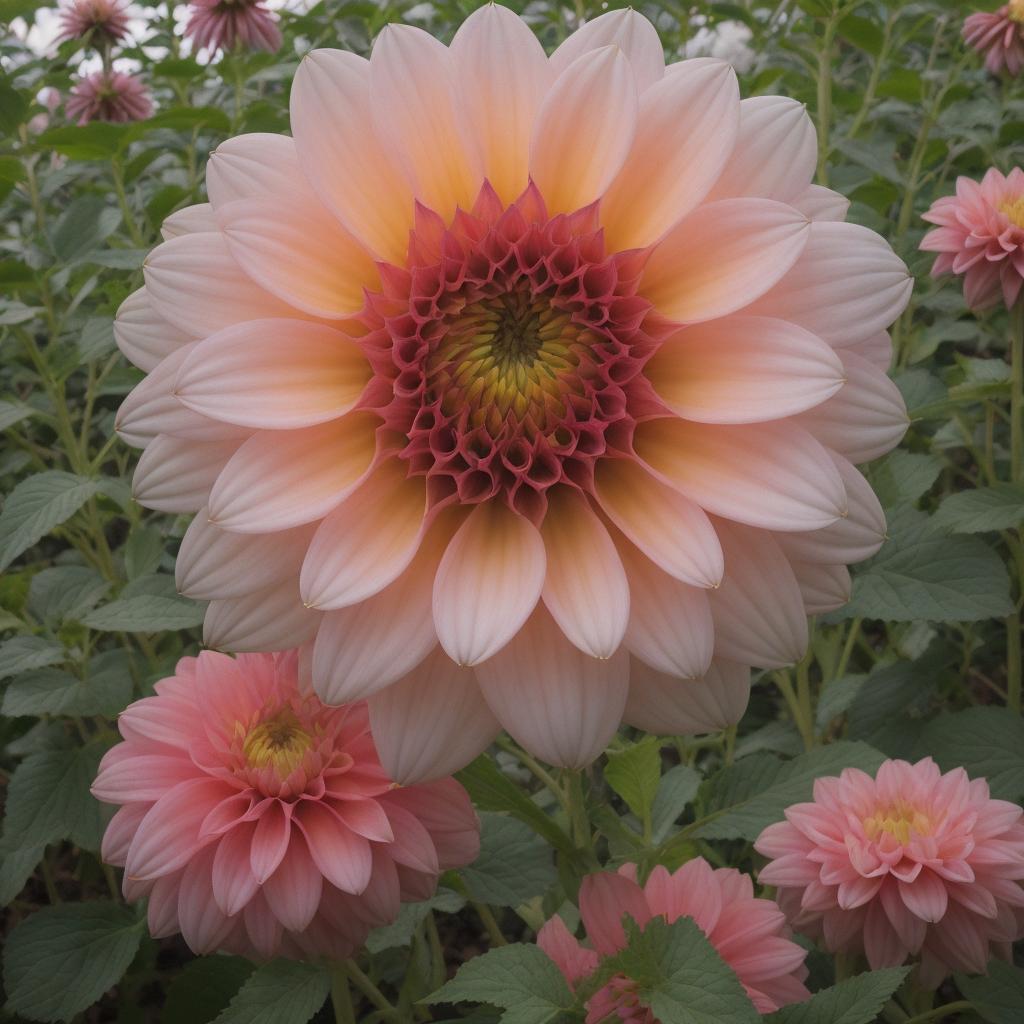Gardening enthusiasts are constantly on the lookout for vibrant and captivating flowers to enhance their outdoor spaces. Among the myriad of choices, dahlias stand out as true stars in the garden. These dazzling beauties come in a variety of colors, shapes, and sizes, making them a versatile and sought-after addition to any garden. In this comprehensive guide, we will explore the art of growing dahlias, showcasing their stunning features, and offering valuable insights for cultivating these radiant blooms.
Understanding Dahlias: A Brief Introduction
Dahlias, belonging to the Asteraceae family, are native to Mexico and Central America. Known for their intricate and layered petals, these flowers can range from small and delicate to large and flamboyant. With more than 42 species and thousands of cultivars, dahlias offer an extensive palette for gardeners to choose from, ensuring there’s a variety for every taste and garden style.
Choosing the Right Dahlia Varieties for Your Garden
Before diving into the cultivation process, it’s essential to select the right dahlia varieties that suit your garden’s aesthetic and climate. Some popular types include:
- Dinnerplate Dahlias: Known for their enormous, plate-sized blooms, these dahlias create a stunning focal point in any garden.
- Cactus Dahlias: With spiky, tubular petals, cactus dahlias add a unique and dramatic touch to flower beds.
- Pompon Dahlias: Small and round, pompon dahlias are perfect for borders and containers, providing a charming and delicate appearance.
- Anemone Dahlias: Characterized by a central cushion of fluffy petals surrounded by a ring of larger, flat petals, anemone dahlias are both elegant and eye-catching.
Planting and Caring for Dahlias
Choosing the Right Location
Dahlias thrive in well-drained soil and require ample sunlight. Select a location in your garden that receives at least six hours of sunlight each day. Ensure the soil is rich in organic matter and has good drainage to prevent waterlogging.
Planting Dahlias: Step-by-Step Guide
- Prepare the Soil: Work the soil to a depth of 12-15 inches, incorporating compost or well-rotted manure for added nutrients.
- Plant Tubers or Seeds: Dahlias can be grown from tubers or seeds. Plant tubers in early spring, while seeds can be sown indoors before the last frost.
- Spacing Matters: Depending on the variety, dahlias should be spaced 18-24 inches apart. Give them enough room to grow and flourish.
- Watering Routine: Keep the soil consistently moist but not waterlogged. Dahlias generally require 1-2 inches of water per week.
- Staking for Support: Taller varieties may need staking to prevent them from bending or breaking under the weight of their blooms.

Fertilizing Dahlias
Fertilize dahlias every 4-6 weeks with a balanced, water-soluble fertilizer. Avoid high-nitrogen fertilizers, as they can promote excessive foliage growth at the expense of flower production.
Dealing with Pests and Diseases
While dahlias are relatively resilient, they can be susceptible to pests like aphids and diseases such as powdery mildew. Regularly inspect your plants and take prompt action if any issues arise. Neem oil and insecticidal soap are effective, environmentally friendly options for pest control.
Showcasing Dahlias: Design Tips for Maximum Impact
Creating Dahlia Bouquets
Dahlias are a favorite choice for floral arrangements due to their vibrant colors and varied shapes. Whether used on their own or combined with other garden blooms, dahlia bouquets can bring a touch of elegance to any room. Consider mixing different dahlia varieties for a diverse and visually appealing arrangement.
Dahlias in Container Gardens
For those with limited garden space, dahlias can be grown successfully in containers. Choose large pots with adequate drainage, use high-quality potting mix, and ensure the containers receive sufficient sunlight. Container gardening allows you to move and rearrange your dahlias to suit your design preferences.
Companion Planting with Dahlias
Enhance the beauty of your dahlias by strategically planting companion flowers. Marigolds, zinnias, and salvia are excellent choices that not only complement the colors of dahlias but also attract beneficial insects, promoting a healthy and thriving garden ecosystem.
Frequently Asked Questions (FAQs)
1. Can dahlias survive winter?
Yes, dahlias are sensitive to frost. In colder regions, it’s advisable to dig up dahlia tubers in the fall, let them dry, and store them in a cool, dark place until the next growing season.
2. How often should dahlias be watered?
Dahlias prefer consistently moist soil. Water them deeply once a week, providing around 1-2 inches of water. Adjust the frequency based on weather conditions and soil moisture.
3. Do dahlias attract pollinators?
Yes, dahlias are pollinator-friendly. Their vibrant blooms attract bees, butterflies, and other beneficial insects to your garden.
4. Can dahlias be grown from seeds?
Yes, dahlias can be grown from seeds. Start seeds indoors before the last frost, and transplant the seedlings into the garden when the weather is suitable.
5. How do I prevent diseases in dahlias?
To prevent diseases, ensure proper spacing between plants for good air circulation. Water at the base of the plants to avoid wetting the foliage, and promptly remove any diseased or yellowing leaves.
Conclusion
Dahlias, with their captivating beauty and versatility, are a delightful addition to any garden. By following the guidelines for planting, caring, and showcasing these radiant blooms, you can create a garden that is not only visually stunning but also a haven for pollinators. Experiment with different varieties, design techniques, and companion plants to make your dahlia display truly unique. Embrace the joy of growing dahlias, and let their dazzling beauty transform your outdoor space into a vibrant oasis of color and life.